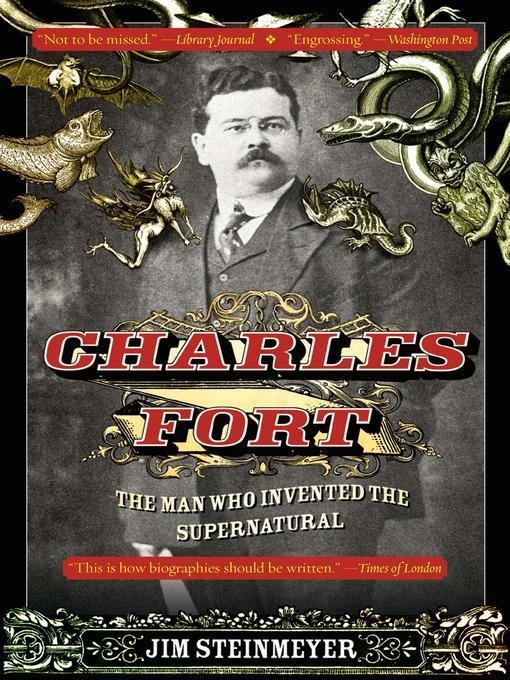
Charles Fort
The Man Who Invented the Supernatural
- اطلاعات
- نقد و بررسی
- دیدگاه کاربران
نقد و بررسی

March 3, 2008
Ben Hecht saw iconoclastic author Fort (1874–1932) as an “inspired clown” who thumbed his nose at science as well as religion, and Fort's imaginative books exerted a strong influence on science fiction, notably novelist Eric Frank Russell. Stage magic historian Steinmeyer (Hiding the Elephant
) captures Fort's wry humor, skepticism and wildest notions. Surviving fragments of Fort's unpublished autobiography illuminate his strict Albany, N.Y., childhood. In 1892, Fort became a New York City reporter and editor before his world travels and 1896 marriage. He was befriended by Theodore Dreiser, who shepherded Fort's short stories and first novel into print. Fort also pored through diverse journals to document the paranormal and anomalies rejected by the scientific establishment. Shoe boxes packed with 40,000 slips of paper served as a basis for The Book of the Damned
(1919), which saw print because Dreiser threatened to leave his publisher unless the company also published Fort. As more compilations of oddities appeared, Fort developed a cult following, and the so-called Forteans issued journals long after their leader's death. Steinmeyer has emerged from the archives with a wonderful, prismatic portrait of the man who once wrote, “To this day, it has not been decided if I am a humorist or a scientist.” 8 pages of b&w photos.

Starred review from March 15, 2008
Steinmeyer ("The Glorious Deception"), a preeminent stage and TV designer of magical illusions, shows himself a gifted biographer with this moving study of a 20th-century original. Decades after his death with a cultish following that began in his lifetime, Charles Fort (18741932) remains a thinker whose motivation and compositions (e.g., "The Book of the Damned" of 1919, still in print) maintain their fascination. Despite his subtitle, Steinmeyer knows that the supernatural as a concept existed before Fort; Fort, in effect, brought it back to earth. Assiduously, he culled from the periodical record countless observed instances of the inexplicable: showers of frogs, a rain of blood in North Africa, a flurry of flakes of beef in 1876 Kentucky. Then he ruminated upon the datanot as proof of miracles but as palpable occurrences disregarded by science. To Fort, these hundreds of phenomena that flew (often literally) in the face of accepted theory demonstrated that science was the blinkered religion. His work attracted the enthusiasm of Theodore Dreiser. Steinmeyer is an elegant and unobtrusive author who shows us an entirely fascinating, shy, and witty man. The unpublished autobiographical fragments that Fort penned about his Albany, NY, childhood, achingly poignant, display, as much as his books, a prose stylist like no other. This book is not to be missed. P.S. Have reprints of Fort's work on hand, too!Margaret Heilbrun, "Library Journal"
Copyright 2008 Library Journal, LLC Used with permission.

April 15, 2008
Fort is generally remembered, when he is, as a cranks crank and a skeptical satirist, but Steinmeyer seems to argue for a more nuanced view; after all, Fort greatly influenced conspiracy maven Robert Anton Wilson, among other notables. Relying heavily on Forts correspondence, Steinmeyer details Forts relationship with Theodore Dreiser, who served as Forts champion and protector, a post necessitated by Forts far-reaching criticism and contrarian reactions to the thoughts and writings of other luminaries of the late-nineteenth and early-twentieth centuries. In his career, Fort wrote about victims of spontaneous combustion, introduced the concept of teleportation, and indulged in conspiracy theories and UFO yarns. Crank or delineator of modern concepts of the supernatural, he is a figure worthy of rediscovery. Esteemed not only by Dreiser, Fort was also dismissed by the New York Times and called a damnable bore by H. G. Wells, thus achieving a certain balance of critical appraisal in his own time. Steinmeyers comprehensive work may allow readers to draw their own conclusions and certainly will afford them much entertainment.(Reprinted with permission of Booklist, copyright 2008, American Library Association.)




دیدگاه کاربران